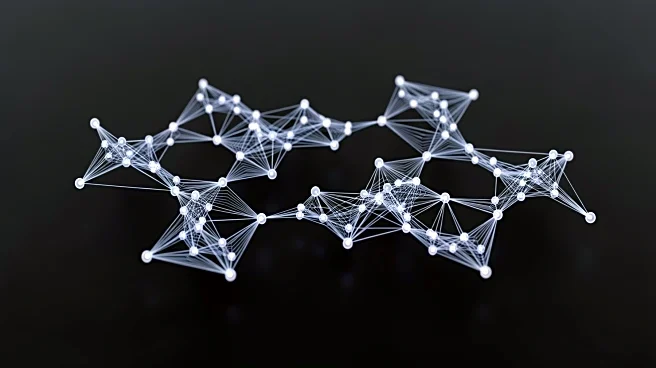What's Happening?
Recent research has delved into the properties of quantum graphs, specifically focusing on isoscattering non-isospectral graphs. These graphs, characterized by their metric and topological structures,
serve as models for quantum chaos and wave propagation. The study highlights the use of Schrödinger differential operators on these graphs, examining the Laplacian operator's spectrum. Despite having identical scattering matrices, the graphs exhibit different spectral properties, challenging traditional notions of spectral analysis. The research aims to demonstrate the experimental observation of non-isospectrality in these graphs.
Why It's Important?
Understanding quantum graphs and their spectral properties is vital for advancements in quantum physics and related fields. The study of isoscattering non-isospectral graphs can lead to new insights into quantum chaos and wave dynamics. This research has implications for theoretical physics, potentially influencing the development of quantum computing and other technologies. The findings may also impact the design of experiments in quantum mechanics, offering new methods to explore wave functions and spectral analysis.
What's Next?
Further experimental studies are needed to validate the theoretical findings and explore practical applications. Researchers may focus on refining the experimental setups to observe non-isospectrality more clearly. The study could lead to collaborations between theoretical physicists and experimentalists to advance the understanding of quantum graphs. Future research might explore the implications of these findings for quantum computing and other emerging technologies.











